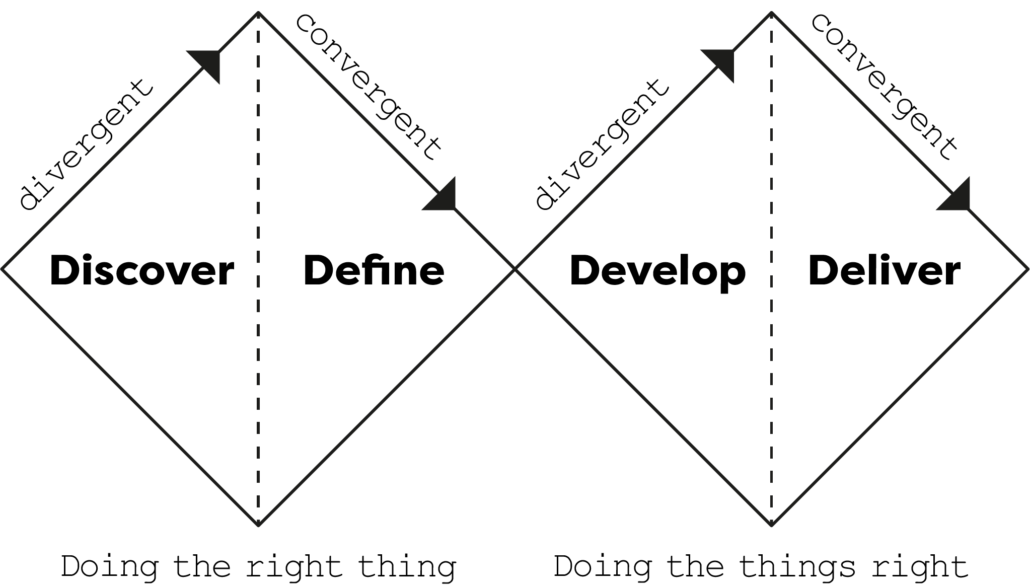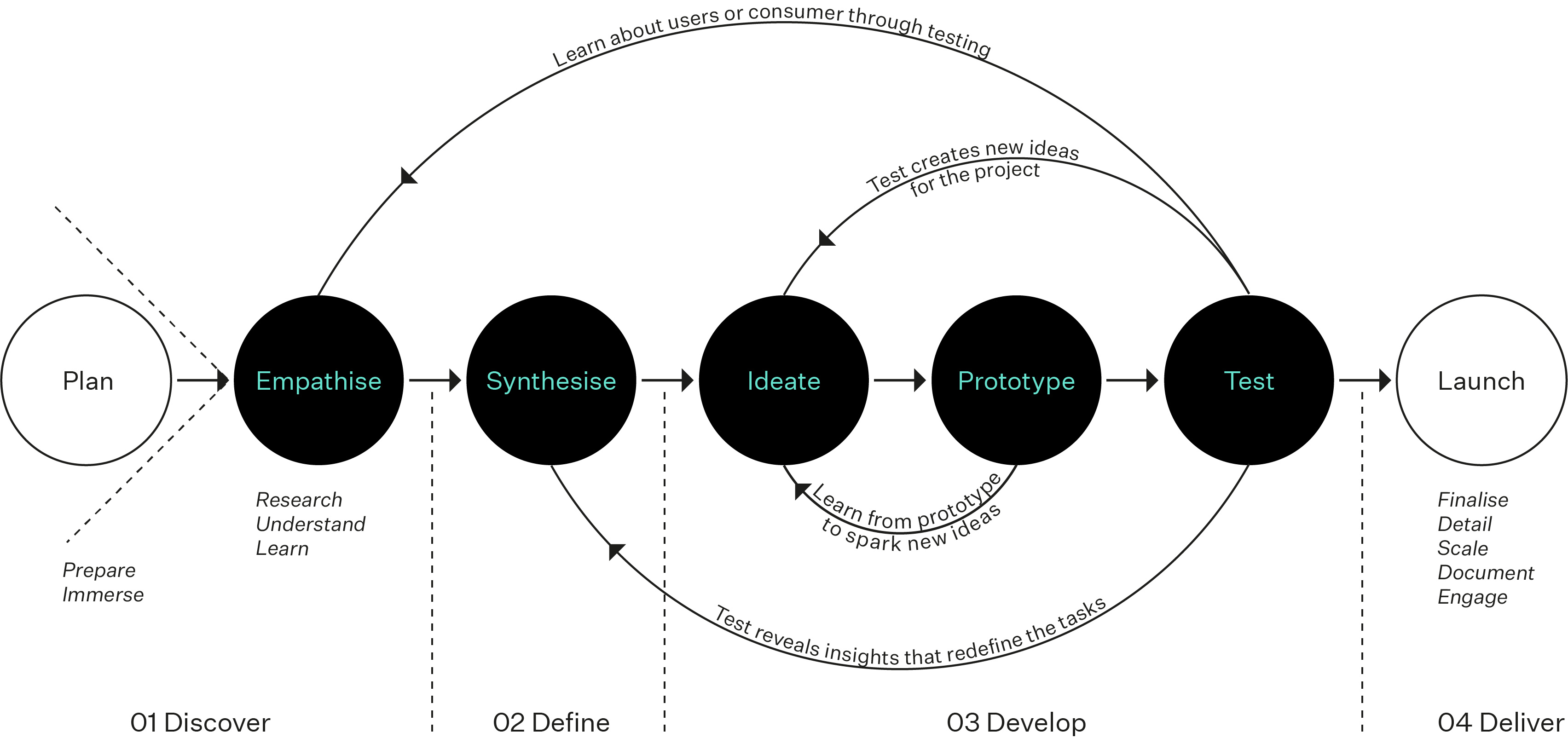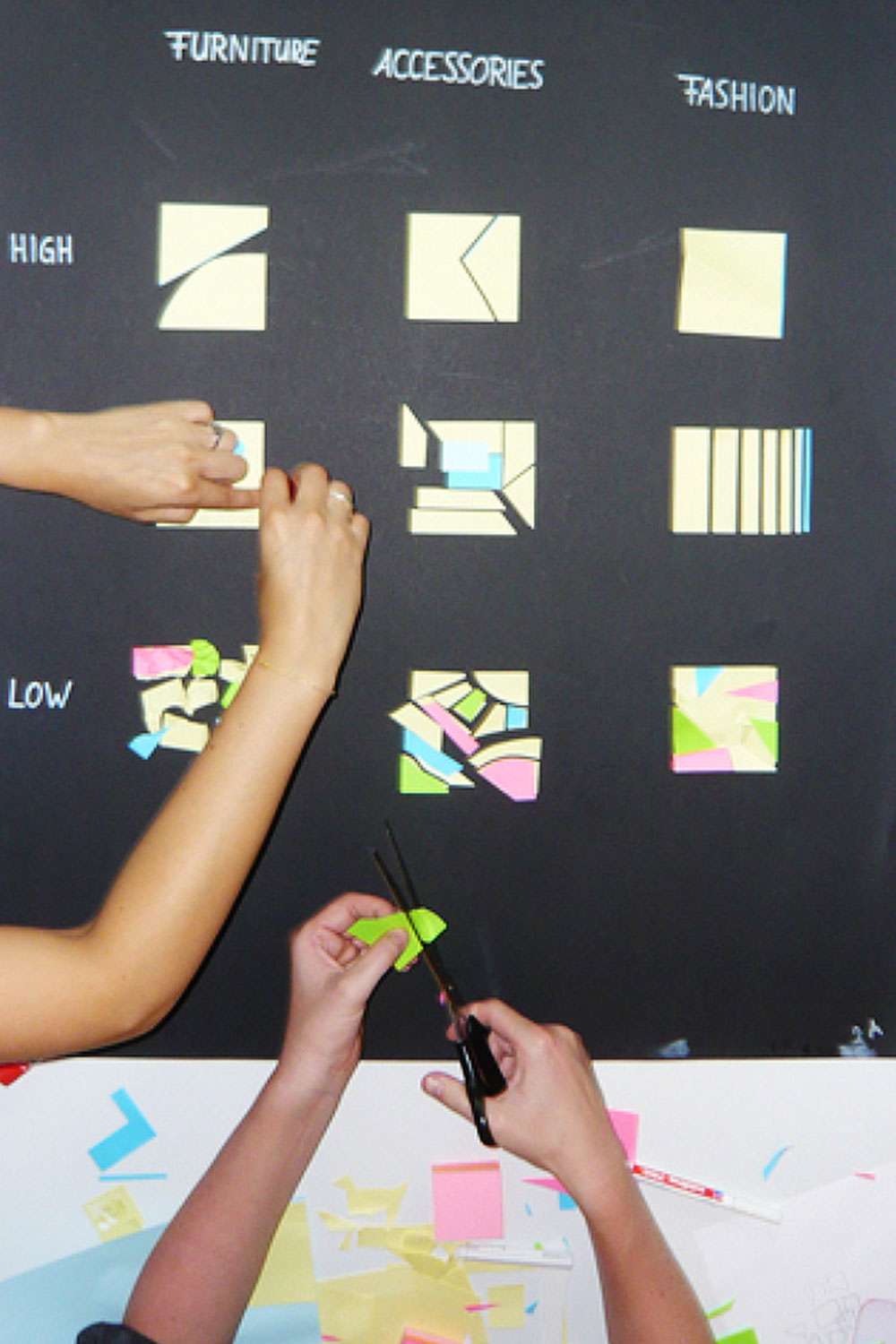DESIGN PROCESS
Doing the right thing AND the things right.
As a starting point, we looked at the most common and simplest design process models as well as design thinking models that proceed in roughly the same way: observe, generate ideas and put them up for discussion. From this, we developed our own model, incorporating our 30 years experience in corporate and consumer brand projects.
Double Diamond
The design process model ‘Double Diamond’ or ‘4D’ process (Discover, Define, Develop and Deliver) of the British Design Council is very successful in its simplification and attractive metaphor and certainly the best choice for small projects. The diamonds are useful in helping people understand the divergence and convergence when discovering solutions to customer problems. We go wide, then decide.

The IBM Loop
IBM suggests with its Design Thinking loop a process of continuous reinvention. An iterative process, a rotational process whose end marks another beginning. The loop specifically seeks to discover user needs and endlessly prototype solutions for a better future. The loop is completed in a three-point process involving observation, reflection and making

Observe
Take a closer look to notice the easy to miss consumer needs and verify their expectations against your ideas.
Reflect
Reflection is aimed at consolidating the knowledge acquired, developing a solid point of view and designing a solid plan.
Make
Transform ideas from the abstract into reality.
Our H E Y ! Process
Feedback loops and iterations are the motor in the process. Iterative loops enable real learning to understand the problem, sparkling ideas and lead to really surprising solutions. Doing the right thing AND the things right. Our model takes the 4 Ds as a framework, but incorporates feedback loops branching off prototyping and testing.
We combine systems thinking with design thinking which means we switch between the holistic and the user view continuously.
Plan
First of all, an upstream start phase is necessary, in which the task, the problem and the environment are roughly framed. No contents are discussed yet, it is about agreement on the overall goal, the time frame, the budget and the required human resources and supporting angels.
01 Discover
Research, Understand & Learn
The first stage is usually for user research, market research, and as a result, understanding the problem you want to solve. In doing so, you gather as much information on the topic as possible and talk to all potential target groups. Designers try to look at the world in a fresh way, notice new things and gather insights. These include:
- Market research
- Stakeholders interviews
- User journey
- Trend analysis
01 Discover
Research, Understand & Learn
The first stage is usually for user research, market research, and as a result, understanding the problem you want to solve. In doing so, you gather as much information on the topic as possible and talk to all potential target groups. Designers try to look at the world in a fresh way, notice new things and gather insights. These include:
- Market research
- Stakeholders interviews
- User journey
- Trend analysis
02 Define
Synthesise & Define
The definition stage consists of filtering through all the information you got from stage one, and elaborating on it. This can mean identifying bottlenecks or resource waste, seeing hidden opportunities, setting a list of things the team definitely shouldn’t do (called no-gos). This stage is also intended as springboard for diving into the development stage.
Key outcomes of the Define stage are:
- Problem definition
- Tasks
- Creative brief
- Do’s and Don’ts
03 Develop
Ideate, Prototype, Verify & Refine
The third stage marks a period of development where design-led solutions are developed, iterated, and tested. Ideation is about fanning out to as many approaches as possible, which after selection and prototypical implementation matures into the best solution in several revision rounds.
Key activities during the Develop stage are:
- Multi-disciplinary working
- Visual management
- Rapid prototyping
- Testing
03 Develop
Ideate, Prototype, Verify & Refine
The third stage marks a period of development where design-led solutions are developed, iterated, and tested. Ideation is about fanning out to as many approaches as possible, which after selection and prototypical implementation matures into the best solution in several revision rounds.
Key activities during the Develop stage are:
- Multi-disciplinary working
- Visual management
- Rapid prototyping
- Testing
04 Deliver
Refine, Scale & Launch
The final stage of the Dynamic Loops represents the delivery stage, where the resulting product or service is finalized, scaled and launched in the relevant market. The key activities and objectives during this stage are:
- Final testing, approval and launch
- Scale onto relevant formats
- Engage partner, internal and external
- Set targets, evaluation and feedback loops
© 2020 H E Y ! B R A N D






